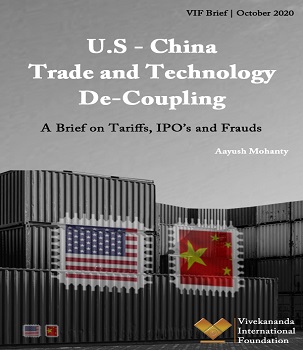
Preamble
The Trump administration has engaged in an intense competition with China on trade and technology. Until Donald Trump was elected, the U.S had a massive trade deficit with China, while Chinese tech giants were capturing the major markets in the smartphone and 5G segment. With “Make America Great Again” as his election’s core agenda and later, “America First” as his administration’s core principle of the foreign policy sees China as a strategic rival.
The U.S. in 2018 took unprecedented steps against China’s state-led mercantilist trade regime leading to President Trump authorising Section 301 of the Trade Act of 1974 as recommended by the U.S. Trade Representative. The U.S. administration, in response to these conclusions of the investigation, imposed duties worth 250 Billion USD on Chinese imports and initiated a dispute settlement at the World Trade Organisation (WTO). It challenged China’s technology licensing discriminatory regulations and enforced the Foreign Investment Risk Review Modernisation Act (FIRRMA) of 2018, which would protect the America’s critical technology and intellectual property from harmful acquisitions.
The de-coupling is not just for trade. Since 2017, the Trump Administration has targeted Chinese tech giants like ZTE and Huawei, who allegedly have links with the Chinese state and the military. This issue brief will explore various actions taken by the U.S. Government to curb Chinese technological advancements while trying to cover the gap of a massive trade deficit. The issue brief is divided into two parts, recounting the steps taken by the Trump administration on trade and technology especially against China.






Post new comment